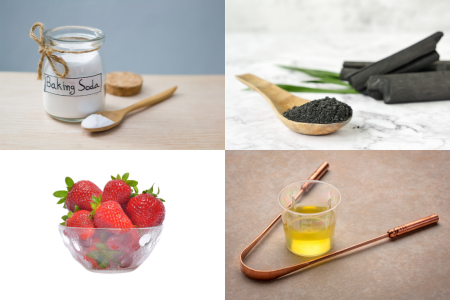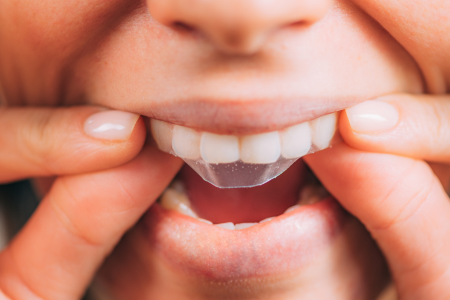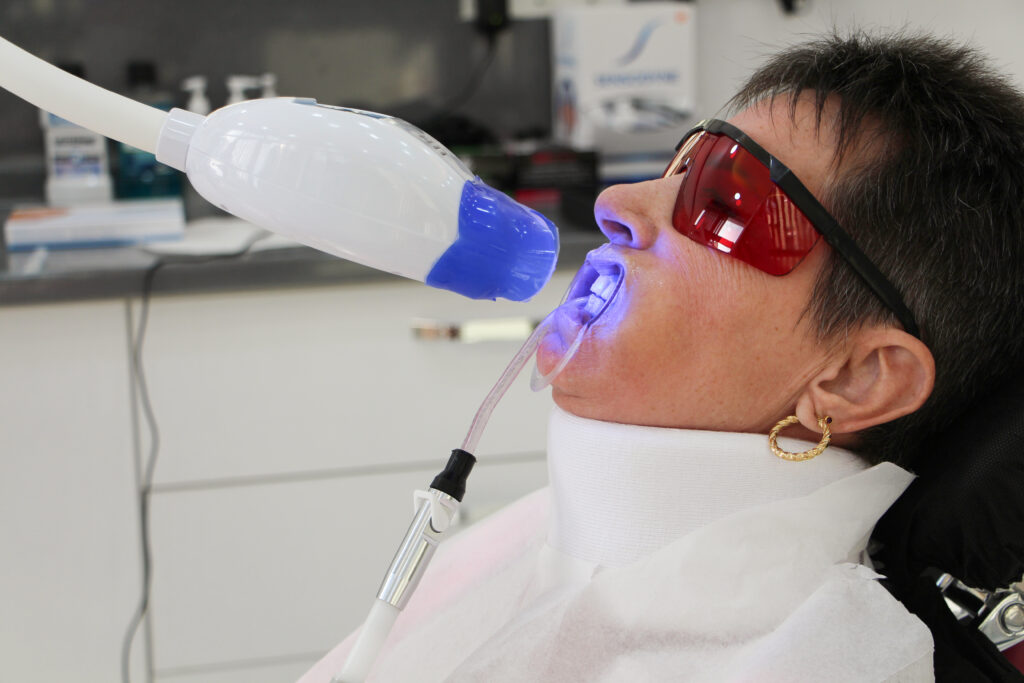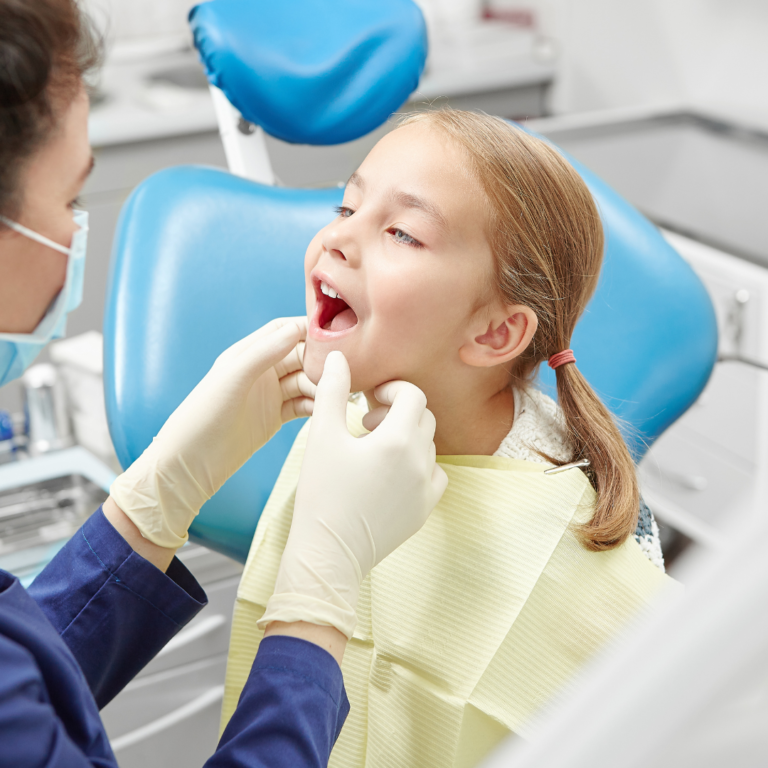Welcome to Smile and Holiday, the premier dental clinic in Fethiye that understands the importance of a radiant smile. If you want to enhance your smile by brightening your teeth, you’re in the right place. In this blog, we will explore the top 3 ways for teeth whitening, focusing on risk-free options that prioritise your dental health.
A dazzling smile can boost your self-confidence and leave a lasting impression. However, with the plethora of teeth whitening products and treatments available today, it’s essential to choose methods that are effective and safe for your teeth and gums. At Smile and Holiday, we believe in providing our patients with the highest quality of care, including recommending risk-free teeth whitening options that deliver remarkable results.
Join us as we delve into the top 3 teeth whitening techniques that have gained popularity among dental professionals and patients. By understanding these options, you can make an informed decision about the most suitable method for achieving a brighter, more captivating smile.
Remember, when it comes to teeth whitening, it’s crucial to prioritise the health of your teeth and gums. Our team of experienced dental experts at Smile and Holiday is dedicated to ensuring your safety and satisfaction throughout teeth whitening. Let’s explore the world of teeth whitening together and discover the best risk-free options to help you achieve the smile of your dreams.
Natural Remedies
Natural remedies for teeth whitening are alternative methods that use common household items or natural ingredients to help remove stains and brighten the teeth. While these remedies may not provide the same level of whitening as professional treatments or specialised products, they can be used as supplementary or maintenance options. Here are explanations of some popular natural remedies:
- Oil Pulling: Oil pulling involves swishing a tablespoon of coconut oil in your mouth for 15-20 minutes. The oil is believed to attract and remove bacteria, plaque, and stains from the teeth. After swishing, the oil is spat out after swishing, and the mouth is rinsed with water. This technique promotes oral health and potentially contributes to teeth whitening.
- Baking Soda: Baking soda, also known as sodium bicarbonate, is a mild abrasive that can help remove surface stains from the teeth. It acts as a gentle scrub and can polish the enamel, making it appear brighter. Baking soda can be mixed with a small amount of water to form a paste, which is then applied to the teeth and brushed for a minute or two before rinsing thoroughly.
- Strawberries: Strawberries contain malic acid, a natural teeth-whitening agent. To use strawberries for teeth whitening, you can mix a ripe strawberry with a small amount of baking soda to form a paste. Apply the paste to your teeth and leave it on for 5-7 minutes before rinsing thoroughly. Be aware that excessive use of this method may cause tooth sensitivity or damage to the enamel, so it’s best to limit its usage.
- Activated Charcoal: Activated charcoal is a highly absorbent substance that can help remove surface stains from the teeth. It is available in powder or capsule form. To use activated charcoal, wet your toothbrush, dip it into the charcoal powder, and brush your teeth gently for a minute or two. Rinse thoroughly to remove any residue. It’s important to note that activated charcoal can be messy and may stain clothes or surfaces, so take precautions while using it.

Natural remedies may vary in effectiveness, and individual results can vary. They are generally milder and may take longer to show noticeable whitening effects than those of professional treatments or specialised products. It’s important to use natural remedies in moderation, follow the recommended application methods, and maintain a regular oral hygiene routine for optimal dental health. Consulting with your dentist is always recommended to ensure the safety and suitability of natural remedies for your specific dental condition.
Maintaining good oral hygiene practices such as regular brushing, flossing, and visiting your dentist for professional cleanings can also contribute to keeping your teeth clean and bright.
Home Type Teeth Whitening Methods
Whitening Toothpaste
Whitening toothpaste is a type of toothpaste specifically formulated to help remove surface stains and lighten the colour of teeth. Unlike professional teeth whitening treatments or bleaching agents, whitening toothpaste does not contain high concentrations of bleaching agents like hydrogen peroxide. Instead, it relies on other mechanisms to achieve its whitening effects. Here’s how whitening toothpaste works:

Whitening toothpaste often contains mild abrasives that help polish the teeth and remove surface stains. These abrasives are usually finer than those found in regular toothpaste, allowing them to gently scrub away stains caused by coffee, tea, tobacco, or certain foods. The abrasive particles help to physically remove extrinsic stains, making the teeth appear brighter and cleaner.
It’s important to note that the effectiveness of whitening toothpaste can vary depending on the formulation and the individual’s specific teeth and staining. Whitening toothpaste is generally considered safe for regular use, but following the instructions and not exceeding the recommended usage is essential.
While whitening toothpaste can help with surface stains, it may not be as effective in addressing intrinsic stains or deeper discolouration. If you have stubborn or severe teeth discolouration, consulting with a dentist is recommended to explore other professional whitening options.
Whitening Strips
Whitening strips are a popular over-the-counter teeth whitening option that consists of thin, flexible plastic strips coated with a peroxide-based gel. They are designed to be applied directly to the teeth and left in place for a specific duration.
Whitening strips are usually applied twice daily for a specific duration, typically 30 minutes to 1 hour. The recommended usage may vary depending on the brand and the strength of the gel. It’s important to carefully follow the instructions provided with the product to ensure safe and effective use.
For several applications, which may span a few days to a few weeks, the peroxide gel breaks down stains and lightens the teeth’ colour. Results can vary depending on the individual’s starting tooth shade, the stains’ severity, and the strip usage’s consistency. Generally, whitening strips can provide noticeable results, particularly for mild to moderate teeth discolouration.

You should know that whitening strips are primarily designed to address surface stains and may not be as effective for deep or intrinsic ones. Additionally, they may not provide the same level of whitening as professional dental treatments. If you have significant tooth discolouration or desire more dramatic results, it’s advisable to consult with a dentist for alternative options.
When using whitening strips, it’s essential to adhere to the recommended duration and usage frequency to minimise the risk of tooth sensitivity or gum irritation. If you experience any adverse effects, it’s best to discontinue use and consult with your dentist.
Overall, whitening strips can be a convenient and affordable option for at-home teeth whitening, offering gradual improvement in tooth colour and the flexibility to whiten teeth in the comfort of your home.
Whitening trays
Whitening trays, or bleaching trays, are dental devices used for at-home teeth whitening. They consist of custom-fitted trays made of a flexible material, usually plastic, and are designed to hold a bleaching gel.
Whitening trays are custom-made to fit the unique shape of your teeth. Your dentist will take impressions of your teeth to create trays that fit your dental arches. Custom-fitted trays ensure that the bleaching gel makes proper contact with the teeth and prevents gel leakage into the mouth.
The trays are filled with a bleaching gel typically containing hydrogen or carbamide peroxide. These bleaching agents penetrate the enamel and dentin, breaking down stains and discolouration in the teeth’ external and internal layers.
Whitening trays are usually worn for a designated period, often a few hours a day or overnight, depending on the specific instructions provided by your dentist. The duration can vary based on the concentration of the bleaching gel and the desired level of whitening.
Whitening trays offer the advantage of customization, allowing for a precise fit and controlled application of the bleaching gel. This can lead to more even and predictable results compared to over-the-counter options. However, it’s important to consult your dentist to ensure proper usage and minimise any potential risks or side effects associated with at-home teeth whitening.
Professional Teeth Whitening
Professional teeth whitening is a dental procedure performed by a dentist or dental professional to effectively and safely whiten the teeth. It is the most effective method for achieving significant and noticeable teeth whitening results.
Professional teeth whitening is often performed in a dental office. The dentist applies a high-concentration bleaching agent, usually containing hydrogen peroxide, directly onto the teeth. The bleaching agent is carefully used to minimise contact with the gums and other soft tissues in the mouth.

To enhance the effectiveness of the bleaching agent, a specialised light or laser may be used to activate or accelerate the whitening process. The light helps initiate the bleaching agent’s chemical reaction, allowing it to penetrate the enamel and break down stains and discolouration.
Professional teeth whitening can typically be completed in a single office visit, lasting around one to two hours. However, multiple sessions may be necessary to achieve optimal results depending on the desired level of whitening and the severity of the stains.
Professional teeth whitening allows personalised treatment based on the individual’s specific needs and desired outcome. The dentist can adjust the concentration of the bleaching agent and customise the treatment duration to ensure safe and effective whitening while minimising tooth sensitivity.
Professional teeth whitening often provides immediate results, with teeth appearing noticeably whiter after the procedure. However, the full extent of the whitening may become more apparent in the following days as any initial tooth sensitivity subsides and the colour stabilises.
You are in safe hands at Smile and Holiday
Smile and Holiday offers professional teeth whitening services that can transform your smile safely and effectively. Our dental experts utilise advanced techniques and professional-grade whitening agents to help you achieve a brighter and more confident smile. A protective barrier is applied to your gums and soft tissues during the procedure to ensure their safety. Then, a high-quality whitening gel or solution is carefully applied to the surface of your teeth. The whitening agent works to break down stubborn stains and discolouration, revealing a whiter and more radiant smile.
With our expertise and personalised approach, you can trust that your teeth whitening treatment at Smile and Holiday will be tailored to your unique needs, delivering exceptional results while prioritising your dental health. Say goodbye to yellowed teeth and hello to a dazzling smile with our professional teeth whitening services.


